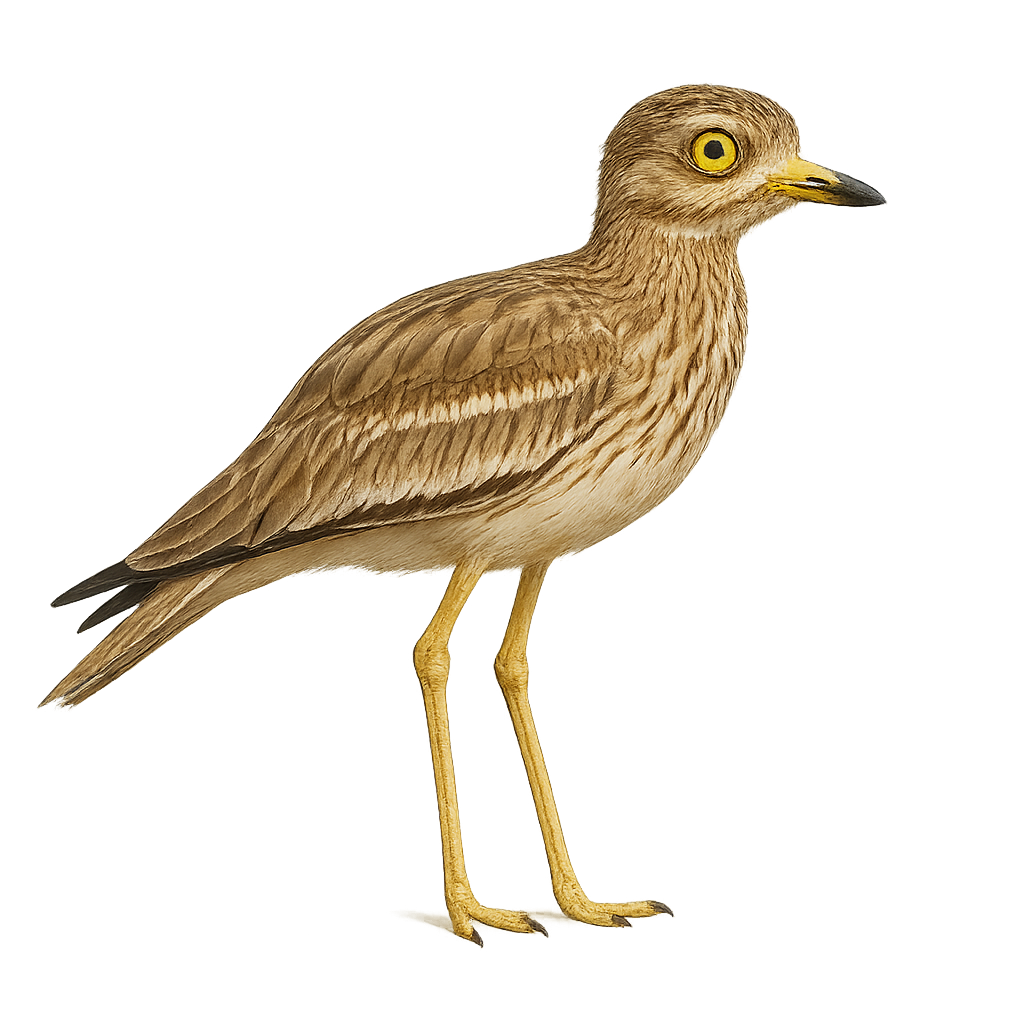Your wildlife photography guide.
Explore the eurasian stone-curlew in detail, study its behavior, prepare your shots.
Where to observe and photograph the eurasian stone-curlew in the wild
Learn where and when to spot the eurasian stone-curlew in the wild, how to identify the species based on distinctive features, and what natural environments it inhabits. The WildlifePhotographer app offers tailored photography tips that reflect the eurasian stone-curlew’s behavior, helping you capture better wildlife images. Explore the full species profile for key information including description, habitat, active periods, and approach techniques.
Eurasian Stone-curlew
Scientific name: Burhinus oedicnemus

IUCN Status: Least Concern
Family: SCOLOPACIDAE
Group: Birds
Sensitivity to human approach: Suspicious
Minimum approach distance: 30 m
Courtship display: March to May
Incubation: 24–27 jours
Hatchings: April to June
Habitat:
Open areas, savanna, and grasslands
Activity period :
Mainly active at night, generally discreet during the day.
Identification and description:
The Stone-curlew is a large, ground-dwelling bird primarily found in open and arid regions of Europe, the Middle East, and North Africa. It measures about 40 to 45 cm in height and weighs between 350 and 500 g. What distinguishes the Stone-curlew is its cryptic plumage, generally brown-gray in color, allowing it to blend effectively among vegetation or rocks. It has large yellow eyes and a distinctive call, which is often heard during the night, hence its name. This bird primarily feeds on insects, worms, and small invertebrates found on the ground. The Stone-curlew is mostly active at dusk and at night, feeding slowly while scanning its surroundings. While not in immediate danger, it faces threats from habitat loss, intensive agriculture, and human disturbance.
Recommended lens:
300 mm – adjust based on distance, desired framing (portrait or habitat), and approach conditions.
Photography tips:
Approach discreetly and slowly, as the Great Stone Curlew is a rather shy bird, easily disturbed by sudden movements or a too-rapid approach.
Photograph early in the morning or late in the afternoon, when the light is softer and the bird is more active in searching for food or monitoring its territory.
Capture its natural behaviors: The Great Stone Curlew is often seen on the ground, searching for insects or other prey. Be patient and wait for it to move or rest to capture authentic moments.
Be respectful of its space: Avoid disturbing the bird when it is resting or busy foraging for food. Keep your distance and do not disturb it, especially during the breeding season.
The Great Stone Curlew is a vulnerable species due to habitat loss and human disturbances. It is essential to respect its natural environment, particularly its nesting sites, and follow local conservation rules to protect this fragile species.
The WildlifePhotographer App is coming soon!
Be the first to explore the best nature spots, track rutting seasons, log your observations, and observe more wildlife.
Already 1 430 wildlife lovers subscribed worldwide

